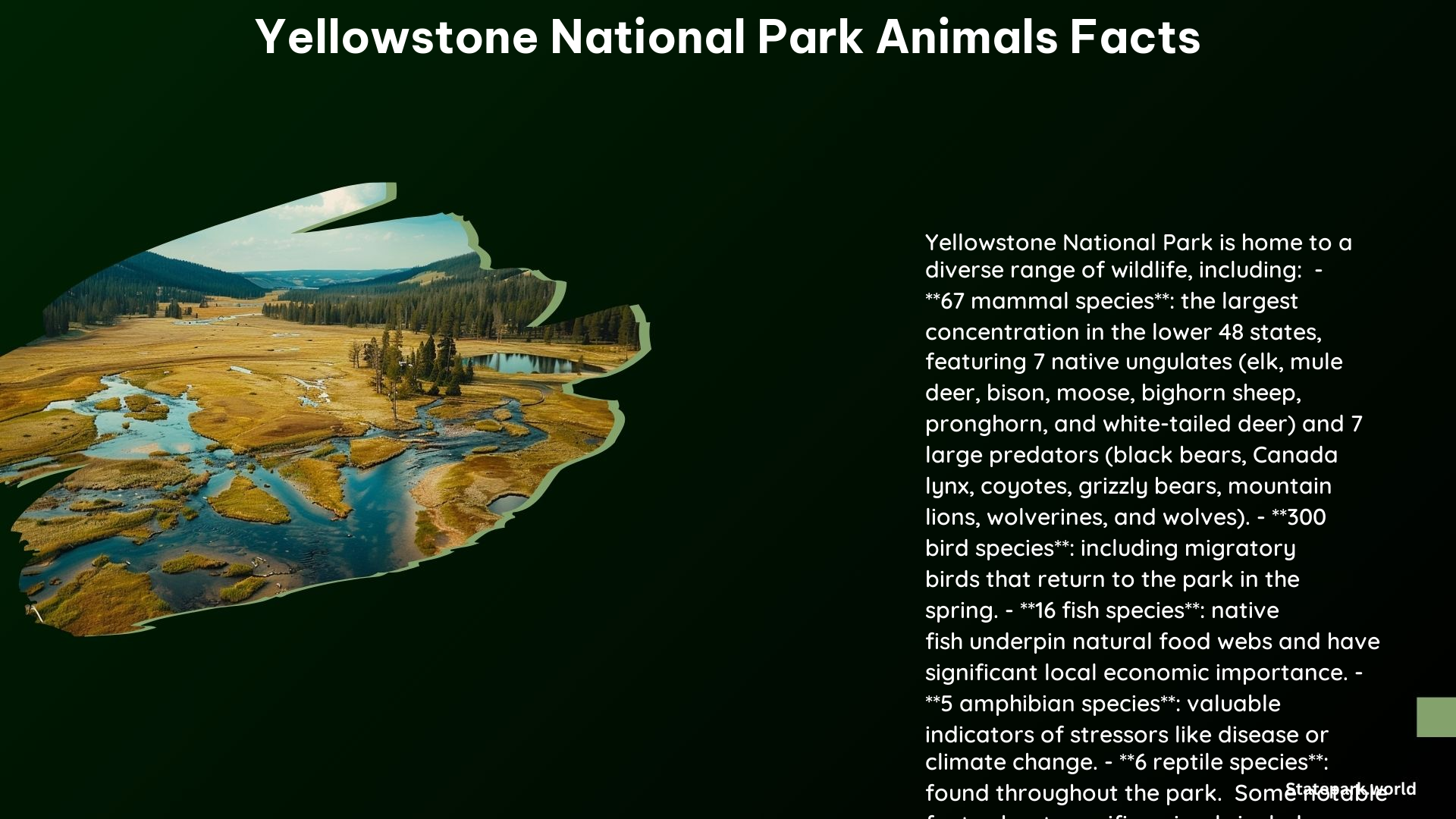Yellowstone National Park is home to an incredible variety of wildlife, with 67 different species of mammals, nearly 300 species of birds, 16 species of fish, five species of amphibians, and six species of reptiles. From the mighty grizzly bears to the elusive wolves, Yellowstone’s animals are a true wonder to behold.
Grizzly Bears: The Apex Predators
Grizzly bears are the true kings of Yellowstone’s wilderness. These powerful creatures can reach speeds of up to 40 mph, making them faster than rabbits and housecats. They are also excellent swimmers and can be seen emerging from hibernation in the spring, a true sight to behold.
Bison: The Majestic Giants

Bison have lived in Yellowstone since prehistoric times and are the largest land-dwelling mammals in North America. These social animals form herds led by older females, which helps protect them from predators. Yellowstone is home to the only continuously free-ranging bison population in the lower 48 states, with an estimated 4,800 bison living in the park as of 2023.
Wolves: The Reintroduced Predators
Between 1926 and 1995, there were no wolves in Yellowstone. In 1995, 31 gray wolves were reintroduced from Canada, and as of January 2024, there are approximately 124 wolves in the park and 500 in the Greater Yellowstone Ecosystem.
Snakes: The Slithering Residents
Five species of snakes live in Yellowstone, including the bullsnake, prairie rattlesnake, rubber boa, common garter snake, and terrestrial garter snake. Only the prairie rattlesnake is venomous.
Other Fascinating Animals
Yellowstone is home to a diverse range of wildlife, including coyotes, elk, moose, bighorn sheep, pronghorn, white-tailed deer, and mountain goats. The park also has 13 species of bats, which are the only mammals capable of sustained flight.
Wildlife Viewing Opportunities
The best time to visit Yellowstone for wildlife depends on your interests. Spring is ideal for spotting baby animals, late September to early October is best for hearing elk bugle, and winter is excellent for spotting wildlife against the snow. Lamar Valley is the most wildlife-rich part of the park, with wide-open meadows and grasslands perfect for spotting bison, elk, bears, moose, wolves, and bighorn sheep.
Safety Precautions
When visiting Yellowstone, it’s important to maintain a safe distance from wildlife: at least 100 yards from bears and wolves, and at least 25 yards from bison, elk, and other animals.
Yellowstone National Park is a true wildlife wonderland, with a diverse array of animals that captivate and inspire visitors from around the world. Whether you’re a seasoned nature enthusiast or a first-time visitor, the park’s unique and fascinating wildlife is sure to leave a lasting impression.
References:
– https://www.yellowstonenationalparklodges.com/connect/yellowstone-hot-spot/yellowstone-weird-wildlife-facts/
– https://destinationyellowstone.com/wildlife-of-yellowstone/
– https://www.nps.gov/yell/learn/nature/mammals.htm
– https://www.nps.gov/yell/learn/nature/wildlife.htm
– https://www.nathab.com/blog/fun-facts-about-yellowstone/
